Big Green Egg FAQ: Everything You Need To Know
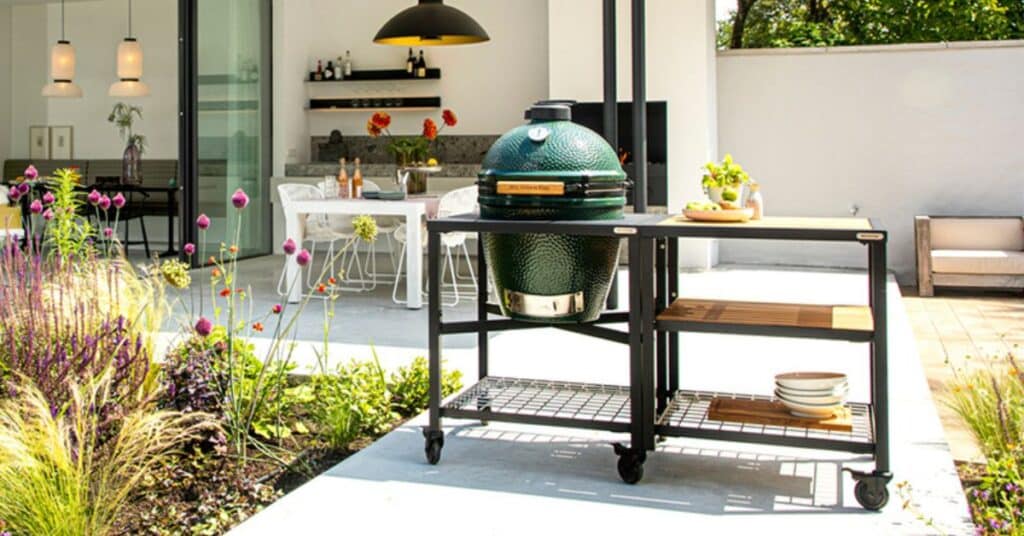
The Most Frequently Asked Questions About Your Big Green Egg
Table of Contents
Using the Big Green Egg and its accessories is straightforward once you become familiar with their functions. Like many skills, mastery comes with practice. Nevertheless, you might sometimes encounter a problem with your Big Green Egg that seems puzzling. Questions such as how to regulate the temperature, identifying essential EGGcessories, or understanding why your EGG is producing a lot of smoke may arise. To make your Big Green Egg experience smoother, we’ve compiled a list of the most common questions and their answers.
Let’s Talk Big Green EGGcessories
The Big Green Egg boasts an extensive selection of accessories that enhance your EGG’s capabilities or are particularly beneficial for specific cooking methods and dishes. However, the question arises: how should these accessories be utilized, and what are the fundamental principles to understand? Additionally, what aspects of these accessories make them indispensable and a must-have for any EGG aficionado? Below, you’ll find the answers to all these queries and more.
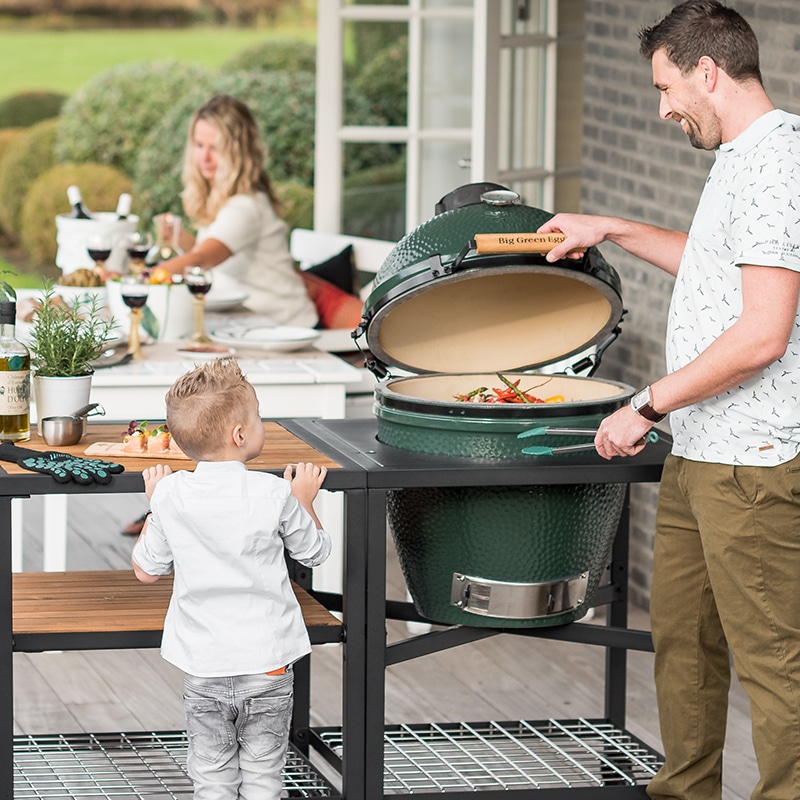
What Are The Most Important Basic Accessories For Your Big Green Egg?
The essential basics for starting with a Big Green Egg include 100% natural charcoal, Charcoal Starters, and an Ash Tool for cleaning out the ash from the ceramic base. It’s also crucial to ensure the EGG is stable and secure, either with an IntEGGrated Nest+Handler for mobility or a Table Nest for custom table installations. To explore the full potential of the Big Green Egg, the top three accessories are the indispensable convEGGtor, the Cast Iron Grid, and the Baking Stone, enabling optimal grilling, indirect cooking techniques, and transforming the EGG into a convection oven for baking.
What Are The Most Practical Accessories To Make Egging Even Easier?
Regular use of the Big Green Egg is more enjoyable with various practical accessories. Silicone Tipped Tongs, a Grid Lifter, EGGmitt, and a convEGGtor Basket set up a professional cooking environment. A reusable Drip Pan collects grease and food remnants during cooking, simplifying cleanup. Maintaining the Big Green Egg in top condition is easier with the occasional use of a Grid Scrubber and an EGG Cover, which protects against all weather conditions.
When Do I Use The Conveggtor And When The Half Conveggtor Stone?
Both the convEGGtor and the Half convEGGtor Stone serve as heat shields in the Big Green Egg, preventing direct cooking over the glowing charcoal. This technique involves indirect cooking through air circulation and the radiant heat from the ceramic. The Half convEGGtor Stone allows for a mix of direct and indirect cooking zones, enabling simultaneous use of different cooking techniques. It’s used with the 1-Piece convEGGtor Basket. Alternatively, placing two Half convEGGtor Stones in the basket offers a larger indirect surface, ideal for low and slow cooking methods.
Can I Use The Baking Stone As A Heat Shield?
No, the Baking Stone is designed specifically for baking, not as a heat shield like the convEGGtor or Half convEGGtor Stone. It is used for baking pizzas, bread, or pastries directly on the stone, always in combination with a heat shield to prevent overheating and burning. The stone should be preheated for quick bakes like pizzas, while for longer bakes, starting with a cold stone is advisable.
Can I Use The Conveggtor As A Baking Stone?
Using the convEGGtor as a baking stone is not recommended. As a heat shield, the convEGGtor heats up quickly, which can result in the bottom of baked goods burning before they’re fully cooked. The convEGGtor should be used as a heat shield, with the Baking Stone placed on a grid above it for baking pizzas, bread, and other baked goods.
I Want To Expand My Accessory Collection. What Are Real Must-haves?
For enthusiasts looking to enhance their Big Green Egg experience, consider the Cast Iron Skillet for its versatility in cooking everything from steamed fish to brownies. For expanding cooking techniques, the Carbon Steel Grill Wok and Dutch Ovens are great for stews and stir-fries. The EGGspander System is a fantastic addition for endless cooking possibilities, maximizing both the EGG’s potential and the user’s culinary skills.
What Can I Do With The Eggspander?
The 5 Piece EGGspander Kit offers limitless culinary creativity, providing numerous cooking options and setups. It includes the 1-Piece convEGGtor Basket, 2 Half Stainless Steel Grids, and the 2-Piece Multi Level Rack. The convEGGtor basket can be used with the Carbon Steel Grill Wok or for cowboy grilling with a Cast Iron Grid. The design allows for cooking on two levels and combining direct and indirect cooking. The 2-Piece Multi Level Rack adds extra capacity for cooking multiple ingredients simultaneously.
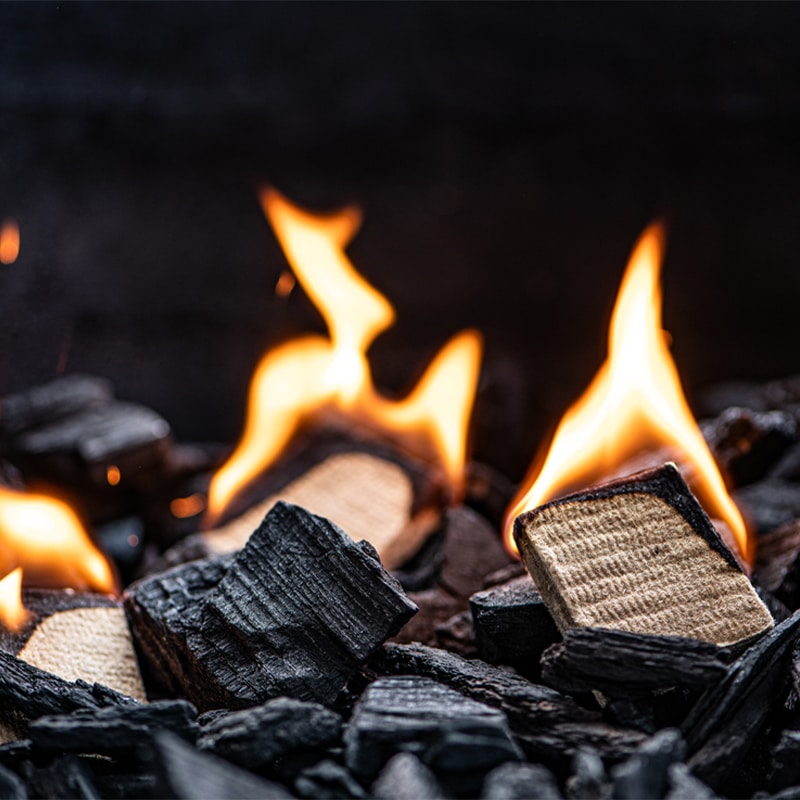
Best Ways To Fuel Your Big Green Egg
Each cooking adventure begins with choosing the appropriate fuel. The secret to creating delicious meals lies in selecting top-notch charcoal. The outcome of your dish is somewhat influenced by the charcoal variety, but it’s undeniable that the taste imparted by charcoal cooking is unmatched. You might wonder about utilizing a spare bag of briquettes in your Big Green Egg. We’re going to delve into why this isn’t advisable, and provide additional insights on how to properly replenish the charcoal in your EGG.
Which Type Of Charcoal Should I Use?
There are various forms of charcoal, each differing in size, shape, and quality, including soft, medium, and hard types. For optimal use in the Big Green Egg, it’s advised to choose a medium charcoal of high natural quality, free from chemical additives, fragrances, and flavors, which doesn’t impart an overly strong taste. Some dishes may not fare well with a heavy charcoal flavor. If you desire an additional layer of flavor, consider using smoking wood. The Big Green Egg’s premium natural charcoal is ideal for this purpose, offering a neutral taste with a subtle smoky accent.
Why Is It Better Not To Use Briquettes In My Big Green Egg?
While briquettes are known for their consistent burning once ignited, this feature becomes a drawback in a kamado-style cooker like the Big Green Egg. Due to their ability to maintain temperature, combined with the Big Green Egg’s insulating properties, temperature control becomes challenging.
Natural charcoal, in contrast, burns and cools quicker, allowing for better temperature regulation. Additionally, many briquettes contain additives that produce excessive ash, disrupting airflow within the EGG and potentially leaving an unpleasant after-smell that affects the taste of your food. These additives could also permeate the ceramic of the Big Green Egg, which is undesirable. Therefore, it’s always recommended to use high-quality, natural charcoal.
How Far Do I Have To Fill My Egg With Charcoal?
Fill the ceramic firebox to the top with charcoal for each new cooking session. The ceramic inner ring of the fire basket ensures a proper distance between the lit charcoal and the cooking grid in its standard setup. If you have leftover charcoal after a shorter cooking session, once the EGG has cooled down, you can simply add more to it for the next use.
When Do I Need To Top Up The Charcoal And How Should I Do So?
At the beginning of each cooking session, stir the charcoal in the Big Green Egg using the Ash Tool. This process helps the ashes and smaller charcoal pieces fall to the bottom of the ceramic base for easy removal, ensuring optimal airflow for each new session. Afterward, refill the charcoal to the top of the ceramic firebox, and you’re ready to begin.
How Do I Top Up The Charcoal While Using My Big Green Egg?
During extended cooking sessions or when high heat is required, you may need to add more charcoal. In such cases, use the Ash Tool to carefully move the burning charcoal to one side of the fire pit, then add new charcoal to the other side. The fire will naturally spread to ignite the new charcoal. Avoid dumping new charcoal directly on the glowing coals, as this can smother the fire, leading to high temperatures only at the bottom of the fire basket, which might damage the ceramic.
After Several Cooking Sessions, There Are Lots Of Small Pieces Of Charcoal In My Egg. Can These Still Be Used?
An accumulation of small charcoal pieces can hinder airflow, making it challenging to reach the desired temperature in the Big Green Egg. It’s best to remove these small pieces from the fire basket or allow the charcoal to burn completely after cooking, thus preventing airflow issues in future sessions.
Lighting Charcoal and Adjusting The Temperature
Before each cooking session with your Big Green Egg, the first step is to light the charcoal and heat the EGG to your preferred temperature. Gaining precise control over the temperature might require a bit of practice initially. Whether you need to increase the heat, decrease it, or maintain a steady temperature for an extended period, it’s all manageable. In the following sections, we’ll guide you on how to accomplish this and offer solutions for any challenges you might face. Soon, you’ll be expertly preparing every dish to perfection.
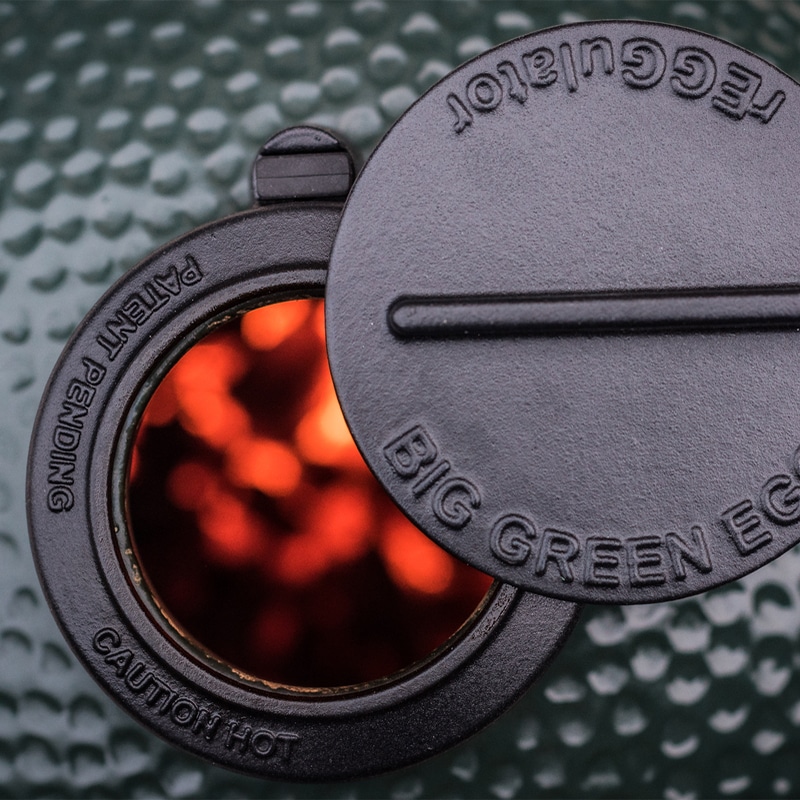
How Do I Ignite The Charcoal In My Big Green Egg?
To ignite the charcoal in the Big Green Egg, start by fully opening the bottom air regulator. Place 1 to 3 Charcoal Starters among the charcoal on top, without burying them. The number of firelighters you use depends on your desired cooking temperature. Use one firelighter for low and slow dishes to prevent the EGG from getting too hot. For higher temperature cooking, such as grilling or baking pizza, use up to three firelighters. Light the firelighters and leave the lid open for 10-15 minutes to allow the charcoal to ignite fully, as the open lid supplies the necessary oxygen. After the firelighters have burned up, close the lid, let the dome heat up for a few minutes, and then start adjusting the temperature.
How Do I Regulate The Temperature Of My Big Green Egg?
Regulating the temperature inside the Big Green Egg is all about controlling the oxygen flow. More oxygen means a hotter and stronger burn from the charcoal, thus a higher temperature. Reducing the oxygen flow will lower the temperature. This is done using a combination of the air regulator at the bottom and the rEGGulator on top of the dome. Start by setting a rough oxygen level with the air regulator, and then fine-tune the temperature using the rEGGulator. Ensure the temperature is stable before cooking, as adding items like a convEGGtor or cold pan can cause temporary drops in temperature.
How Do I Deal With Temperature Fluctuations Caused By Opening The Lid?
Minimize opening the dome during cooking to maintain optimal temperature and even cooking. Even if you open the lid briefly and the temperature drops, the dome’s residual heat and the influx of oxygen will help the temperature quickly recover. Keeping the dome closed as much as possible also protects the felt edges from burning.
The Temperature Is Not Rising Sufficiently. What Could Be The Cause Of This?
Several factors can cause stagnant temperatures in your Big Green Egg: misalignment of the ceramic fire basket’s opening with the air regulator, excess ash in the charcoal, blocked coal grid holes, or an inaccurate thermometer. Ensure proper alignment, remove excess ash using the Ash Tool, clear any blockages in the coal grid, and regularly calibrate the thermometer to address these issues.
The Temperature In My Egg Is Too High. How Can I Get It Down As Quickly As Possible?
Reducing the temperature in the Big Green Egg can be more challenging than increasing it due to the ceramic’s heat retention. To cool it down more rapidly, place a cold convEGGtor and/or Baking Stone inside. This drops the temperature significantly. Also, reduce the air flow by adjusting the air regulator and rEGGulator. Be cautious about backdrafts when placing or removing these accessories.
How Do I Prevent A Backdraft?
To avoid a backdraft at high temperatures, always open the EGG lid gradually. Start by creating a small gap of about 5 cm to allow the hot and cold air to exchange slowly. Then open the lid completely, but cautiously.
How Do I Calibrate My Thermometer?
If your thermometer becomes inaccurate, recalibrate it by removing it from the lid and immersing the pin in boiling water. Adjust it to read 100°C if necessary. Then, test it in ice water for a 0°C reading. Repeat until it consistently shows accurate readings at both temperatures.
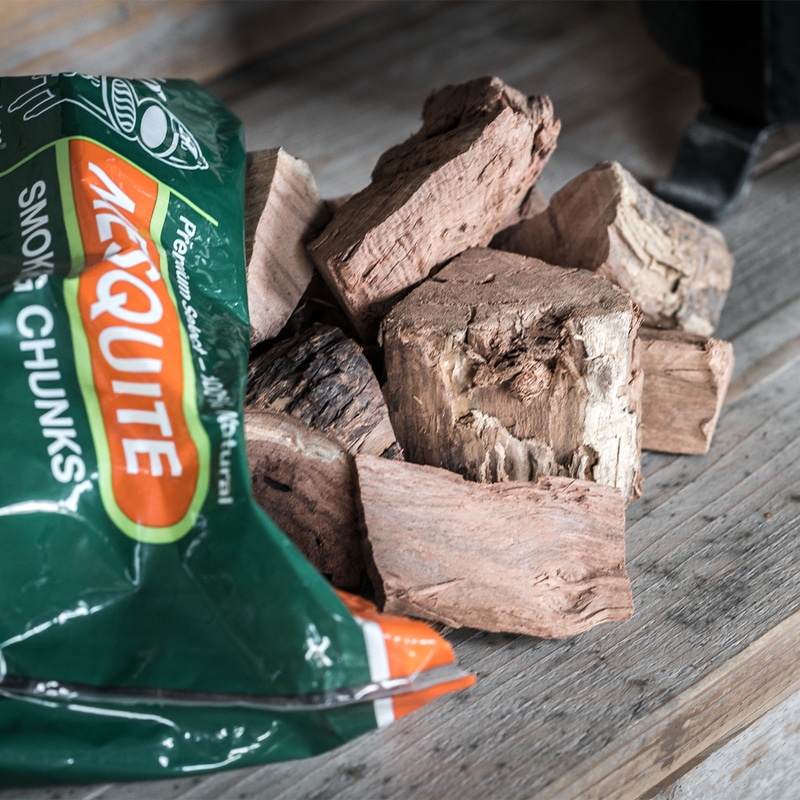
Wanted & Unwanted Smoke
What Is The Difference Between Various Types Of Smoking Wood And When Do I Use Which Type?
To achieve the perfect smoke in your Big Green Egg, smoking wood is essential, typically used alongside a convEGGtor. Adding Wood Chips or Wood Chunks to the charcoal produces a smoky aroma and flavor in your food.
- Wood Chips are small and best for shorter smoking sessions up to 30 minutes, ideal for adding a light smoky taste to fish, poultry, or even to enhance dishes like couscous with a smoky flavor.
- Wood Chunks, larger in size, are designed for longer smoking sessions. They consistently emit smoke, so you won’t need to add more mid-cooking. They’re great for larger meats like smoked pork belly.
How Does Smoking With A Grilling Plank Work?
In addition to Wood Chips and Chunks, a Wooden Grilling Plank offers another smoking method. Soak the plank and place your food on it for a subtle, unique flavor. This method suits small fish, mushrooms, fruits, or duck breast. There are two primary ways to use the plank:
- For cooking and steaming, place the soaked plank with food on the grill. The steam released infuses the food with a sweet, cedar-wood flavor.
- For smoking and roasting, let the soaked plank dry on the grill before adding food. The charring of the wood bottom imparts a smoky taste.
Which Smoking Wood Flavors Go Well With Which Dishes?
The choice of Wood Chips or Chunks affects your dish’s flavor, with each type of wood offering a distinct taste. Here are some general guidelines:
- Apple wood, naturally sweet, is excellent for fish, shellfish, pork, and poultry like chicken and turkey.
- Cherry wood, mildly fruity, works well with fish, lamb, game, duck, and beef.
- Pecan wood, with a rich, soft flavor, suits fish, poultry, beef, pork, and spicy dishes like classic American barbecue.
- Walnut/hickory, strong and spicy, is great for red meat, turkey, chicken, game, and even smoked fruits and nuts.
- Mesquite, known for its aromatic and spicy aroma, is ideal for game, beef steaks, seasoned pork, pulled pork, and brisket.
Why Does My Egg Smoke So Much And How Can I Stop It?
Excessive smoke in the Big Green Egg can be due to several factors, like low-quality fire starters or charcoal, or dripping grease during grilling. To manage unwanted smoke, rather than closing the top reGGulator, which traps smoke inside, close the bottom air regulator to stop air flow and open the rEGGulator lid to let the smoke out. The ceramic’s radiant heat and the grid’s contact heat should suffice to complete your cooking. After a session with grease drips, clean the grid, let the charcoal burn for about 10 minutes to eliminate residue, then close the regulators. This prepares your EGG for the next clean cooking session.
Cleaning & Maintenance
A Big Green Egg is a lifelong investment. With proper maintenance, it can create lasting memories for generations to come. Not only does regular upkeep ensure your meals taste great, but it also keeps your EGG looking pristine. There are several tips and techniques to maintain the cleanliness and optimal performance of your Big Green Egg. Regular cleaning and periodic maintenance checks will keep your EGG in top-notch condition, ensuring years of enjoyment. Remember, taking good care of your EGG is key!
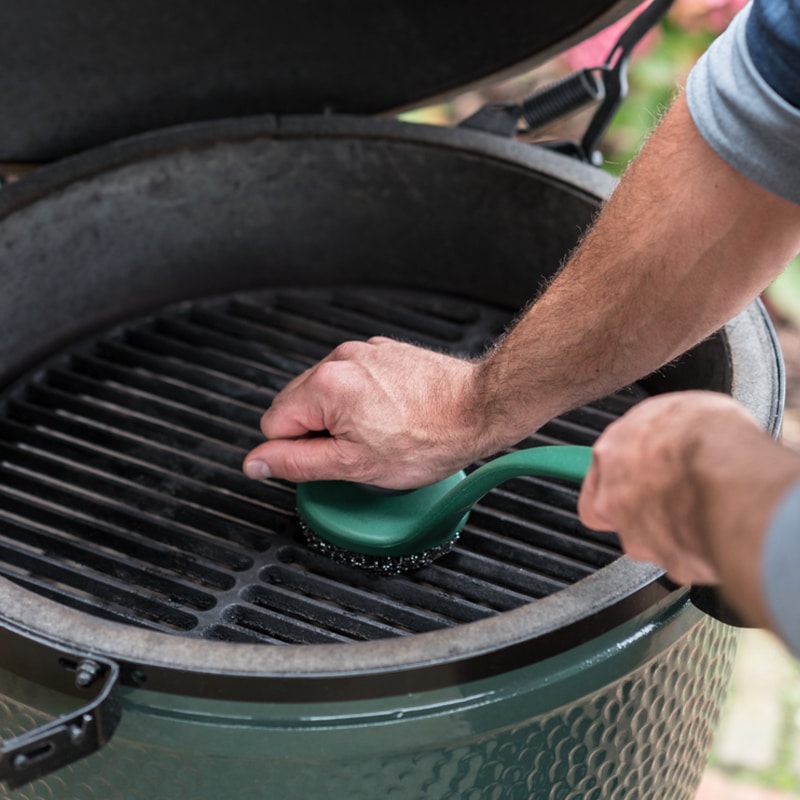
Do I Have To Clean My Egg After Every Cooking Session?
It’s advisable to perform a few quick cleaning steps after each use of your Big Green Egg. The process is simple and takes just a few minutes. Always brush the grid while it’s still hot for easy cleaning. To maintain the condition of your cast iron grid and other accessories, lightly coat them with vegetable oil using kitchen paper. The exterior of the ceramic base and lid can be wiped down with a cloth and a mix of water and gentle soap, especially when the ceramic is still warm, leaving your EGG looking as good as new.
The Inside Of My Egg Has Turned Black. Do I Have To Burn It Clean At A Really High Temperature/stoke It Until White?
No, you don’t need to burn clean your Big Green Egg at extremely high temperatures. This practice is not recommended as it can cause cracks in the fire ring. It’s normal for the inside of your EGG to turn black over time; this actually improves its performance and temperature stability. If the interior seems greasy from heavy cooking, gently heat it to around 250°C to burn off food residues and fat. Once it stops smoking, it’s clean. Occasionally, you may brush the inside of the lid with a steel brush, but turning it white again is not necessary or advised.
There Is Food Residue Burned Into My Conveggtor. How Can I Get Rid Of It?
To prevent this, place a Drip Pan on your convEGGtor during cooking. This catches grease and food particles, keeping the convEGGtor clean. If residues do get on the convEGGtor without a Drip Pan, clean it while it’s hot. For tougher stains, place the convEGGtor upside down in the EGG, heat to 250°C, and wait until there’s no more smoke from the chimney. After this, give it another brush, and it’ll be ready for your next cooking session.
There Is Mold In My Egg. Why Is That And How Can I Remove It?
Mold in your Big Green Egg can occur due to leftover food residues or high humidity, especially if not used for some time. To remove mold, heat your EGG to 180°C and maintain this temperature for about 15 minutes before cooking. This process eliminates both mold and bacteria. To prevent future mold growth, thoroughly brush your grid after each use. When not in use for extended periods, keep the air regulator and rEGGulator fully open to enhance airflow.
